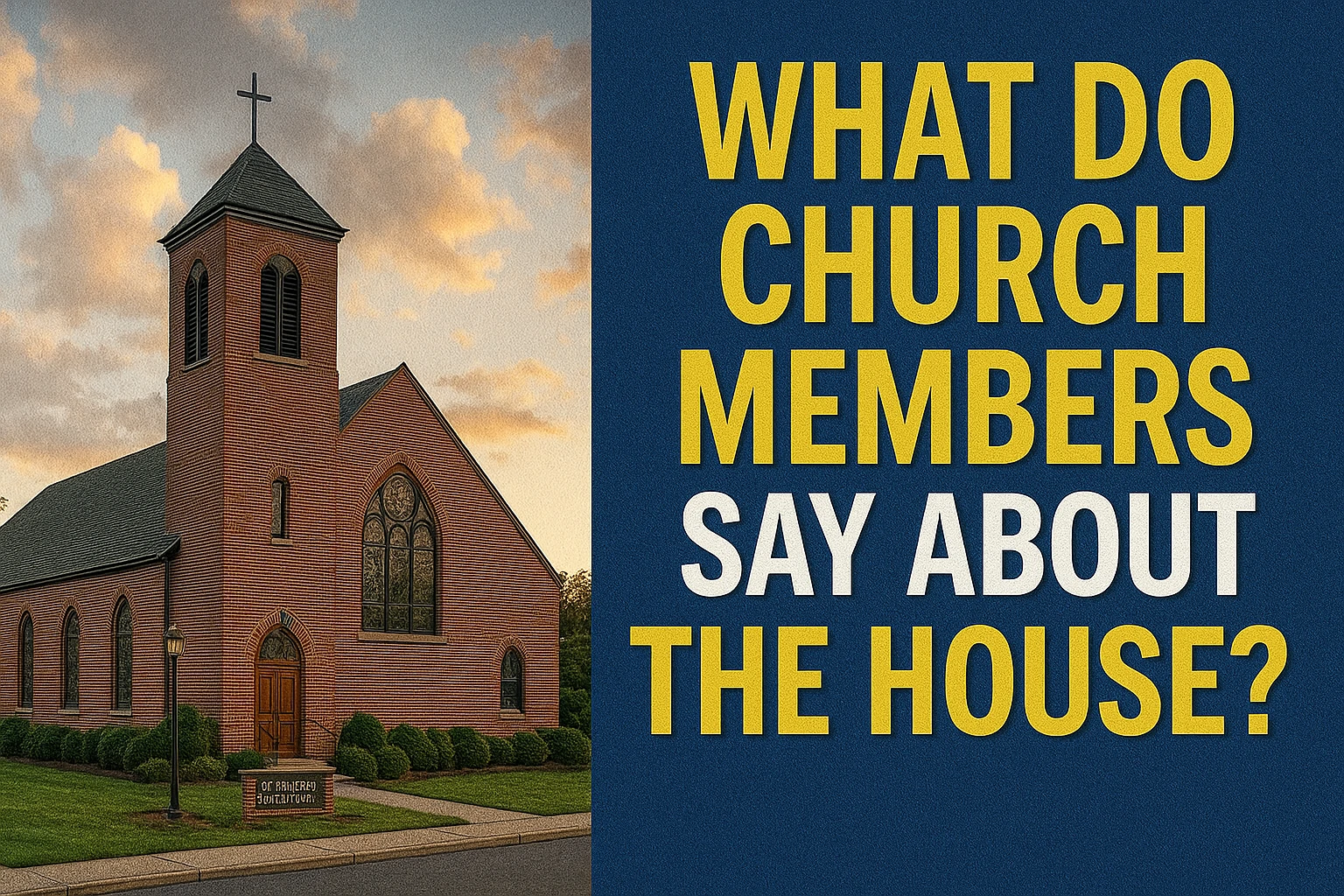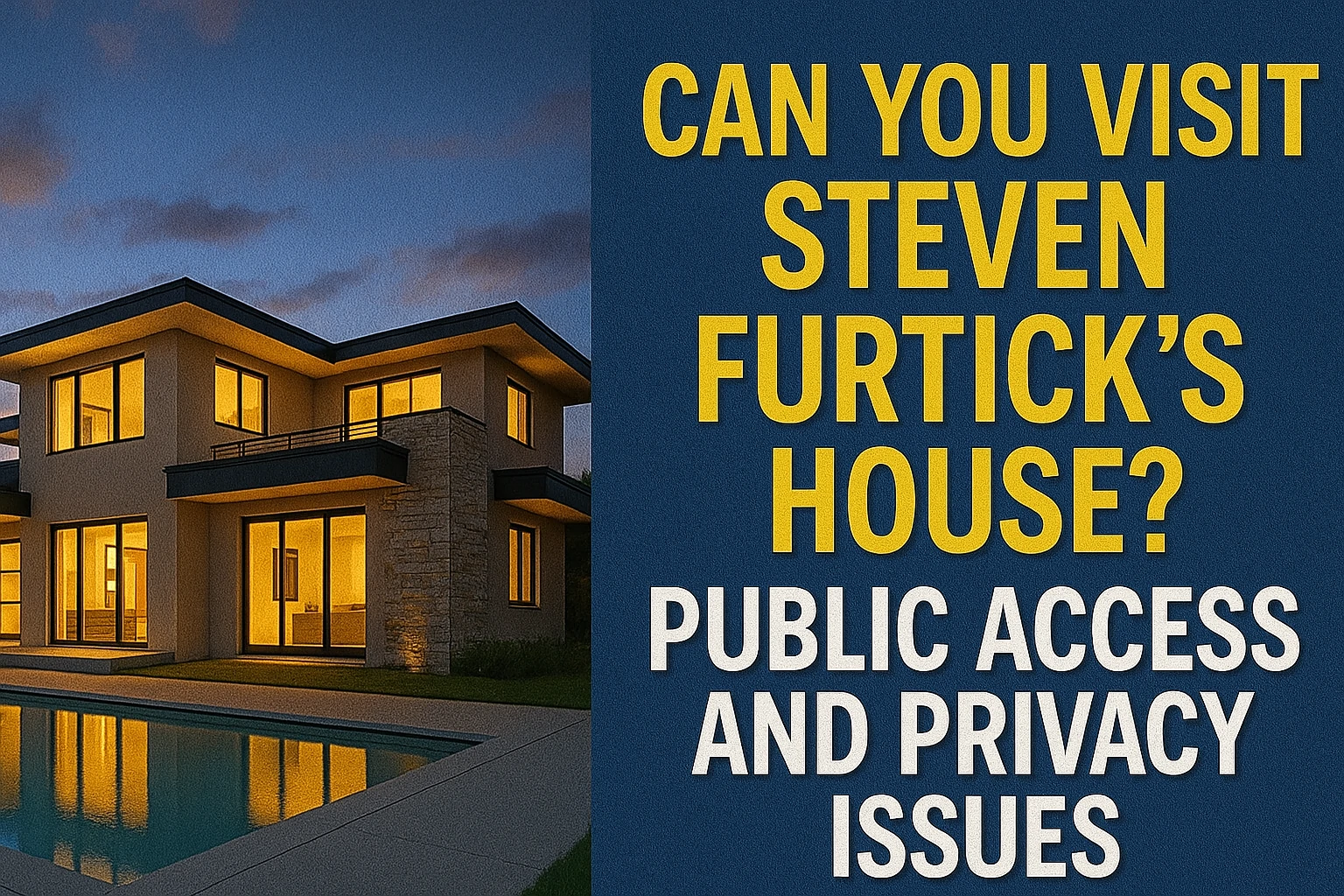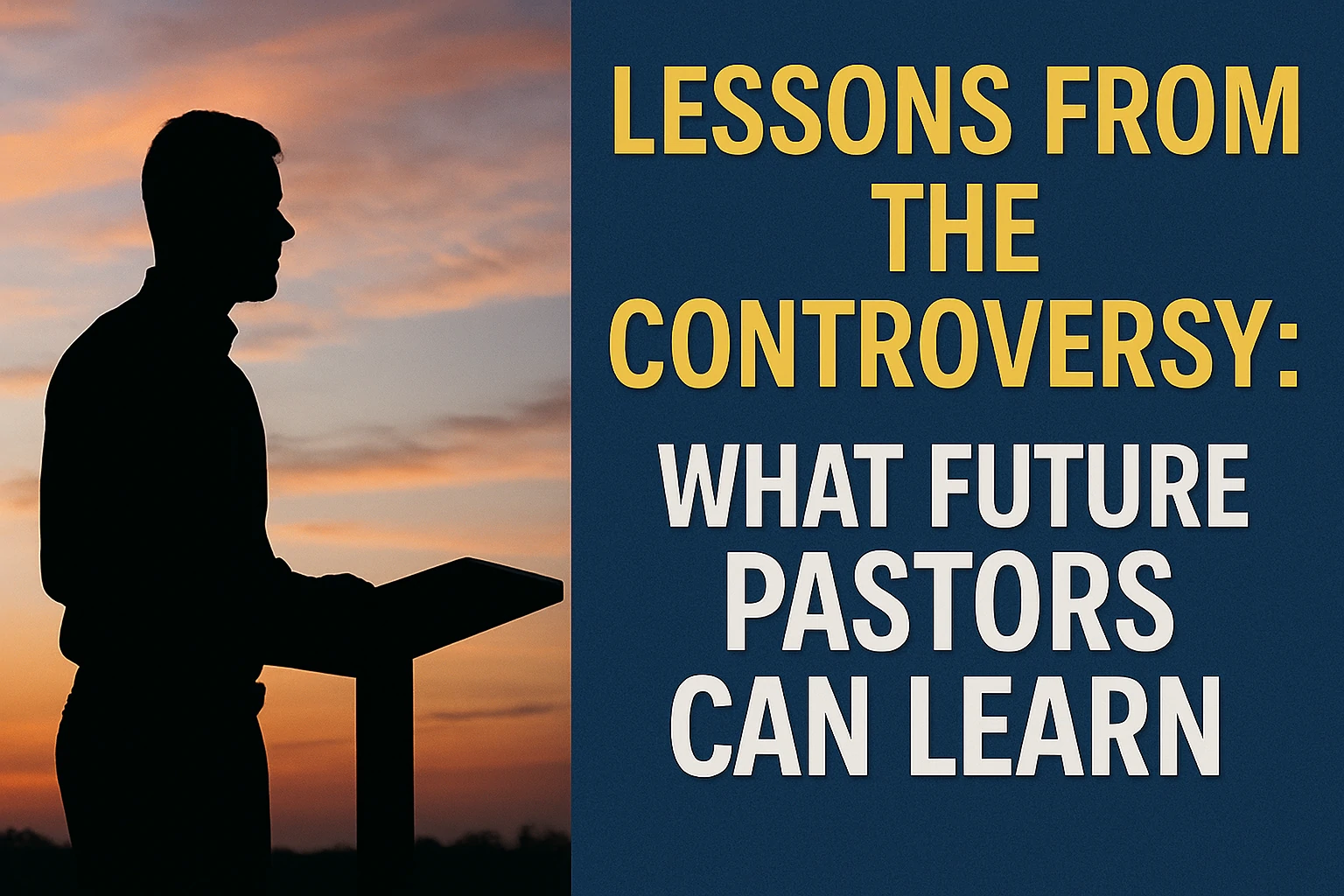Steven Furtick is a well-known pastor, author, and speaker. He leads Elevation Church in North Carolina. His life draws attention, and one topic draws strong curiosity: his house. People want to know its size, cost, and how he explains it. They also ask about public reaction and ethics.
This article gives a deep look at his home. It covers what is confirmed and what remains unclear. It also explores how his house fits into his work, public image, and the views of critics.
The goal is to present facts in plain terms. There is no bias. Readers should form their own opinions. The tone stays neutral, the words stay simple, and the points stay direct.
The article ends with clear lessons. These apply to pastors, churches, and people who support ministry work. Let’s begin with where the home stands.
Who Is Steven Furtick?
Steven Furtick, born in 1980, studied communications in college. He later earned a Master of Divinity. He founded Elevation Church in 2006 with a small group. The church has grown to include thousands of people across many campuses.
Furtick writes books and speaks at major events. His work brings income from sources beyond the church. Critics question how much he earns outside church duties. That debate often ties back to his home and lifestyle.
Supporters point to his impact and hard work. Others ask about the meaning of wealth in religious life. That debate keeps his house in the spotlight.
Location and Land
The house is in Waxhaw, North Carolina, near Charlotte. The land spans about 19 acres. It offers privacy and a quiet setting. Other homes in the area are also large. Some sit inside gated zones.
Tax records show a total value of over $1.6 million. Reports vary about what was paid and how much the build cost. Some show the full amount includes land, construction, and permits. Others suggest a mix of personal and business funds.
The property includes wooded space, open yards, and long driveways. These offer space away from public roads or nearby homes.
Size, Rooms, and Layout
The house is large by any standard. Heated living space is around 8,400 square feet. That number does not include garage space, porches, or basement areas.
Some reports claim the full structure totals 16,000 square feet. That includes both heated and non-heated areas. Others say that label misleads people. They argue the actual family space is closer to what a big home would have in any upscale area.
Reported features include:
- Five bedrooms
- Seven and a half bathrooms
- Spacious garage
- Covered porches
- Outdoor pavilions
The home looks like a mansion to most. But its size is not extreme compared to homes in the same area.
Cost and Financing
The estimated cost of the home is around $1.7 million. Many reports say Furtick used his own income from books and speaking work. The church did not pay for the home.
Furtick’s team has said the home was not funded by church donations. They claimed he used private income. Still, critics ask for proof. Some argue that if church support helps promote his books, then church members still play a part.
There is no full public record of how the money was used. That gap adds fuel to the debate. People on both sides call for more clarity.
Furtick once spoke about the issue during a sermon. He said he felt bad that his house brought stress to the church. He stood by his actions but showed regret for the backlash.
Was the House a Smart Investment? Real Estate Value Over Time

Large homes often spark debate not only about cost but also about value. Steven Furtick’s house is no different. Some see it as a show of wealth. Others view it as a smart investment that could grow in worth over the years.
The home sits on prime land in Waxhaw, a desirable suburb near Charlotte. Property in that area has seen steady growth. A large lot with privacy and acreage makes the house even more valuable. Buyers in that market often seek homes with space and upscale design. That means the house could hold or increase its value in the long term.
Critics focus on the moral side. They question the need for a house of that size. Supporters point out that real estate can be a wise way to use income. They argue that instead of spending on luxury items that lose value, a well-built home on good land can pay off.
Whether the house is seen as excess or wisdom depends on perspective. From a real estate view, the property is strong. From a faith view, opinions differ. Both sides shape how people judge the home.
Public Reaction and Criticism
News of the home brought public attention. Some praised him. Others called the home too much for a pastor.
Critics said pastors should live modestly. They saw a problem in a wealthy pastor leading a church where some members struggle. Some raised questions about how transparent the church was about income and expenses.
Others came to his defense. They said the house was a reward for years of work. They said pastors deserve good things if they work hard. Some said success does not conflict with faith if it comes honestly.
Furtick addressed the concerns. He said his house was a blessing. He also said it brought pain to his church family and that upset him. He promised to serve with a clear heart.
How Elevation Church Responded to the Mansion Backlash
When news of Steven Furtick’s house spread, Elevation Church faced heavy questions. Reporters asked about church funds, pastor pay, and how much of the money came from book deals. The church had to make a public reply to protect its image.
Leaders stated that no tithes or church offerings paid for the house. They explained that Furtick used income from his books and outside work. They stood by him and said his pay was not linked to the cost of the mansion. That reply eased some pressure but did not end the debate.
The church also avoided giving full numbers. It did not release details about his salary, royalties, or contracts. That lack of detail left critics unsatisfied. Supporters trusted the leadership and moved on. The gap between those two groups grew wider.
Furtick himself spoke about the issue from the pulpit. He said he felt regret that his family home became a source of pain for his church. He reminded the crowd that his work came from God’s call. His words gained applause inside the church but did not silence voices outside. The backlash marked a turning point in how the public viewed both him and Elevation Church.
What Do Church Members Say About the House?

Reactions from church members have been mixed. Some members defended their pastor. They said his home did not change his message or his role. They pointed to his books, sermons, and leadership as proof of hard work. To them, the house was a private matter and not a church concern.
Other members struggled with the news. They felt the house was too large and sent the wrong message. Some worried that new visitors might question the church’s focus. They feared that the story about the house could weaken the trust built through years of ministry.
Conversations in the church community showed both sides. In small groups, some spoke about blessings and success. Others raised concerns about modesty and example. The divide showed how one issue can shape faith groups in very different ways.
Church members’ views highlight a larger truth. Trust is fragile. A pastor’s choices affect more than family life. They influence the spirit of the whole church.
What Does the Bible Say About Wealth and Leadership?
The Bible speaks often about money, wealth, and leadership. It does not condemn wealth on its own. It warns about greed, pride, and misuse of power. These warnings shape how many people judge a pastor’s lifestyle.
Scripture shows examples of leaders who had wealth, like Abraham and Solomon. Yet it also praises those who lived with little. Jesus Himself lived with no mansion or land. He taught that treasure in heaven matters more than treasure on earth.
Leaders in the church carry a special role. They guide people not only with words but also with how they live. Passages in the letters of Paul speak about elders living above reproach. They should not chase money or abuse their role. They should be models of humility and care.
When people see a pastor with a mansion, they look back to these texts. Some believe wealth can be fine if earned honestly. Others feel it clashes with Christ’s call to serve in humility. The Bible leaves room for both views but makes one truth clear: leaders must place faith and service above riches.
Steven Furtick’s Other Properties and Assets (If Any)
Public records mostly link Steven Furtick to his main home in Waxhaw, North Carolina. There is no strong proof that he owns other large homes. Still, questions often come up. People want to know if he holds more land, cars, or luxury items.
Furtick keeps his private life guarded. He does not share much about personal spending or extra assets. He rarely speaks about cars, investments, or second homes. That silence makes some people curious. Others respect his choice to stay private.
Reports do not show a long list of luxury assets. There is no known private jet. No proof of beach homes or high-end cabins. His main house stays the focus. Critics think more may exist, but no hard facts confirm that view.
Unless new records appear, the Waxhaw home remains his main known property. The lack of extra real estate does not stop the debate. Even one large house can spark years of questions.
Can You Visit Steven Furtick’s House? Public Access and Privacy Issues

Steven Furtick’s house sits on private land. It is not open to the public. No tours are offered. The home sits far from the road, behind trees and gates. Visitors cannot see much without crossing into private space.
Some fans have tried to visit. Others have driven by just to catch a glimpse. Local rules protect private property. Any uninvited visit may be seen as trespassing. Security and signs warn people to stay out.
The area around the house has grown more private over time. Neighbours do not welcome strangers. The home is meant for peace, not public access. Even photos are rare. Most online images come from drone shots or tax records.
Furtick has said little about privacy. His focus stays on church work. Still, the house draws interest. That interest often clashes with the need for safety and quiet. The message is clear: the house is not a public place.
Timeline: Key Dates Around the Mansion Story
This can be a short timeline with 4-6 dates showing:
- Land purchase
- Permit approval
- News breaks
- Public response
- Furtick’s church speech
- Ongoing reaction
How the Media Covered Steven Furtick’s Mansion Story
The media played a big role in making Steven Furtick’s house known to the public. Local news first reported the story. They shared details about the land, the size of the house, and the value of the property. That early report spread fast.
Soon, national outlets picked it up. Some praised Furtick’s success. Others raised hard questions about wealth and church life. The headlines focused on the cost, the land, and the word “mansion.” That word shaped how people saw the house, even if it did not match the true layout.
Talk shows, blogs, and YouTube videos followed. People debated the meaning of faith, fame, and money. Some said the news attacked Furtick unfairly. Others said pastors must face public review if they live large. The debate crossed into churches, forums, and online groups.
Furtick spoke about the coverage. He said he did not blame the media. He said the story hurt his church family. Still, he stood firm. He called his home a blessing. The media storm died down over time, but the questions stayed.
Lessons from the Controversy: What Future Pastors Can Learn

The story of Steven Furtick’s house offers lessons for pastors and churches everywhere. The home itself is not the only issue. The reaction, questions, and media buzz all show how fast trust can change.
First, pastors must think about how personal choices affect public trust. A large house may be legal. It may be paid for with private money. Still, people will ask what it means. A leader’s life speaks louder than sermons. What you build says something to those who follow you.
Second, churches need clear systems for money. That means open books, strong boards, and clear pay plans. When churches explain where money goes, people feel safe. When they don’t, doubts grow.
Third, leaders should not hide from questions. Silence creates fear. Calm answers build peace. If a story breaks, speak with care. Say what happened. Say what it means. Say what you plan to do next.
Lastly, pastors should stay close to their message. A big house is not wrong, but it can look wrong. That gap between message and life causes pain. When the two match, people feel secure. When they don’t, some walk away.
Future leaders can avoid this path. Be clear. Be fair. Be wise. Trust takes time to build. It takes one story to break.
Ethical and Faith-Based Questions
The home raises deeper issues. Should pastors live in luxury? Can a leader preach faith and still own a mansion? These questions come up often in church life.
Some followers of faith say wealth shows God’s favor. Others say that belief strays from core values. Simple living is often linked with humility and service.
Another issue is clarity. Church leaders face pressure to stay open about money. Big homes raise suspicion. Some ask if book sales and church life are too closely tied.
Furtick’s house stands as a case study. It shows how public success and personal gain can clash. It forces faith groups to ask: what standard should our leaders follow?
Does Steven Furtick Preach Prosperity Gospel?
Some people link Steven Furtick to the prosperity gospel. That message says faith and giving can bring wealth. Critics call it a harmful view. Supporters say it offers hope and bold goals.
Furtick does not use the term “prosperity gospel” often. His sermons speak about growth, vision, and blessing. He tells people to expect big things. He says God rewards trust and bold action. That message sounds like prosperity teaching to some.
Others say he focuses more on purpose than profit. His church runs outreach programs. He teaches about struggle and pain too. He does not promise money for faith. Still, critics say his lifestyle sends mixed signals.
Furtick’s house brings that debate to life. Can a pastor preach faith and own luxury? Some say yes, if the money is clean. Others say no, no matter the source. The house keeps the prosperity talk alive, even if he avoids the label.
Elevation Church and Giving

Elevation Church is active and large. It has campuses across the state. It runs major events and helps with charity efforts. The church earns a high level of income.
Reports say Elevation Church has donated millions to causes like disaster relief, school aid, and community groups. Some supporters say that level of giving offsets concerns about leadership lifestyle.
Still, critics want more. They ask how much goes to outreach versus staff and buildings. They want more clear numbers and fewer bold claims.
The church’s size means small mistakes bring big headlines. That includes anything tied to money, fame, or media.
Other Pastors in Similar Cases
Steven Furtick is not alone. Other pastors have faced questions about their homes. Some leaders live in mansions and justify them through books, events, or business work.
Some pastors donate their book profits to their church. Others keep that income but use outside boards to review finances. These steps help reduce backlash.
In Furtick’s case, his salary is set by a board. That board includes pastors from other churches. Some say that raises concern. They want a board with financial experts or independent members.
This case shows the risks. Without full openness, trust fades.
How Steven Furtick’s House Compares to Other Celebrity Pastors’ Homes
Steven Furtick is not the only pastor who owns a large house. Many other well-known church leaders also live in homes that draw attention. Some of them face the same public questions. People often compare their homes to understand if Furtick’s house is normal or extreme.
Joel Osteen owns a mansion in Houston. Reports say it is over 17,000 square feet. It has six bedrooms and is worth several million dollars. T.D. Jakes lives in a large home in Fort Worth. His property is also valued in the millions. These homes are bigger or close in size to Furtick’s house.
In many ways, Furtick’s house fits a pattern. Big churches often have leaders with big homes. Book deals, event speaking, and business work can bring large income. Some pastors say they use their own money and not church funds.
Still, each case is different. Some pastors explain their finances more openly. Others face more pressure from the public. Furtick’s house stands out because of its timing, location, and media coverage.
The size of the house matters less than the story behind it. That is what people focus on. In the world of ministry, how you live can speak louder than what you say.
Gaps and Missing Facts
Not all details are public. Here are some unknowns that keep the debate going:
- Full breakdown of costs (land, build, interior)
- Book income vs. speaking fees vs. salary
- Clear lines between church business and private gain
- Use of guest space, garage, and outdoor buildings
Until those facts come out, some people will trust him. Others will doubt. That split may never end.
The Bigger Picture

The home affects how people see Steven Furtick. To some, he is a bold leader who grew a church and built a life. To others, he is a symbol of pride and excess.
He has responded. He shared feelings and stood firm. But once fame sets in, every move draws eyes.
A leader’s image can help or hurt a church. A house, even one far from the pulpit, becomes part of the story.
Churches must learn from this. Success is fine. So is growth. But leaders must stay humble. They must lead in a way that matches what they teach.
What Churches Can Learn
Furtick’s house is not just news. It is a lesson. Churches should take note. Leaders need clear rules, clear money lines, and clear ethics.
Steps churches can take:
- Be open about how funds are used
- Use outside boards to review pay and perks
- Keep book income separate from church effort
- Lead by example in daily life
- Avoid surprises that may shock members
No system is perfect. But some effort builds trust. That trust matters more than any mansion.
Look What Mom Found Fathead Wall Graphic Giveaway
Conclusion
Steven Furtick’s house draws strong opinions. It is large, costly, and hidden from full view. Some see blessing. Others see pride. The truth sits between those views.
The home has stirred debate. It raised real questions about wealth, faith, and leadership. It forced the church and public to ask: how should pastors live?
Facts exist, but not all. Furtick claims the house came from private income. Critics want proof. Supporters believe him. Critics want numbers. Both sides speak from deep values.
This house teaches much. About money. About faith. About human nature. It shows that fame, even in the pulpit, brings weight. Every pastor, church, and donor should think hard about what it means.
Let your values guide your view. Let fairness shape your response. In the end, this story is not about one man. It is about how people live what they preach.
Frequently Asked Questions❓
Q1. What is the size of Steven Furtick’s house?
The house includes around 8,400 square feet of heated living space. Some reports say the full structure totals up to 16,000 square feet, including porches, garage, and non-heated areas.
Q2. Where is Steven Furtick’s house located?
His house sits on private land in Waxhaw, North Carolina. The area is near Charlotte and known for large lots, privacy, and upscale homes.
Q3. How much did Steven Furtick’s house cost?
Estimates place the cost around $1.7 million. The full amount may include land, construction, permits, and added features like outdoor pavilions or large driveways.
Q4. Did church donations pay for Steven Furtick’s house?
Reports from Elevation Church say the home was paid for using Furtick’s private income. Critics still question the line between church growth and personal earnings.
Q5. Why did the house cause public controversy?
The house drew public attention due to its size and cost. Many people questioned if such a home fit the values of Christian leadership and church service.
Q6. Can the public visit or view Steven Furtick’s house?
The property is not open to the public. It sits behind gates and trees, and local laws protect the area as private residential land.



